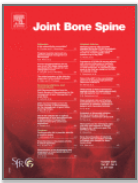 Inflammatory myopathies of autoimmune origin are part of systemic diseases as well as systemic lupus erythematosus or the various forms of scleroderma. Among myositis, the most frequent are dermatomyositis and inclusion myositis. The boundaries between all these entities may be permeable, both in terms of clinical signs and biological disturbances, the first of which is the positivity of certain autoantibodies. The last few years have seen the development of rapid tests, such as immunoblots allowing typing and titrating a whole battery of autoantibodies in the same patient. Among them, we distinguish myositis specific autoantibodies (MSA) and myositis associated autoantibodies (MAA). Establishing the immunological profile of each patient is of great importance because it gives an idea of the prognosis and allows a more targeted therapeutic approach.
Inflammatory myopathies of autoimmune origin are part of systemic diseases as well as systemic lupus erythematosus or the various forms of scleroderma. Among myositis, the most frequent are dermatomyositis and inclusion myositis. The boundaries between all these entities may be permeable, both in terms of clinical signs and biological disturbances, the first of which is the positivity of certain autoantibodies. The last few years have seen the development of rapid tests, such as immunoblots allowing typing and titrating a whole battery of autoantibodies in the same patient. Among them, we distinguish myositis specific autoantibodies (MSA) and myositis associated autoantibodies (MAA). Establishing the immunological profile of each patient is of great importance because it gives an idea of the prognosis and allows a more targeted therapeutic approach.
In an article published in July 2020, internists from Lille performed these tests on 300 patients in their department where the diagnosis of systemic sclerosis had been made between 2015 and 2017. Two different techniques were used to minimize the risk of mistake. Some patients had muscle explorations to document genuine associated myositis. The authors point out that 17% of individuals had positive MSA or MAA, which is far from negligible. The correlations with the clinical picture, and in particular the risk of interstitial lung disease, have been relatively disappointing, however.
